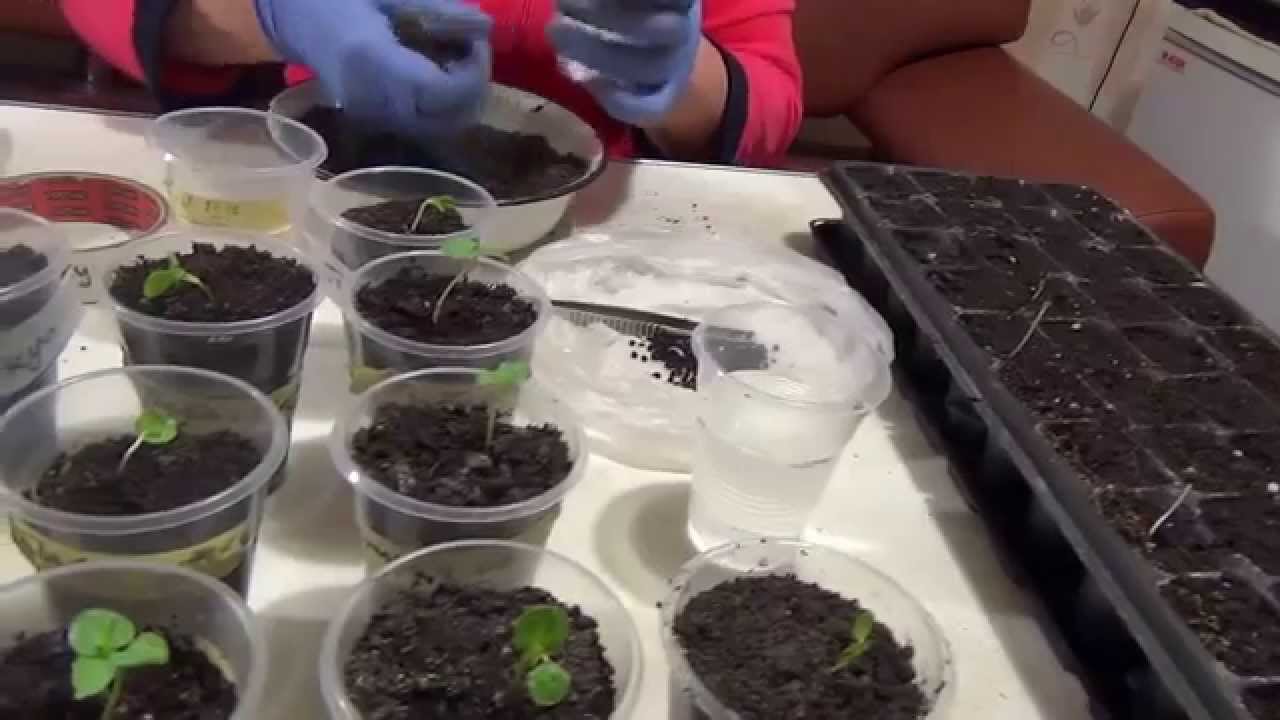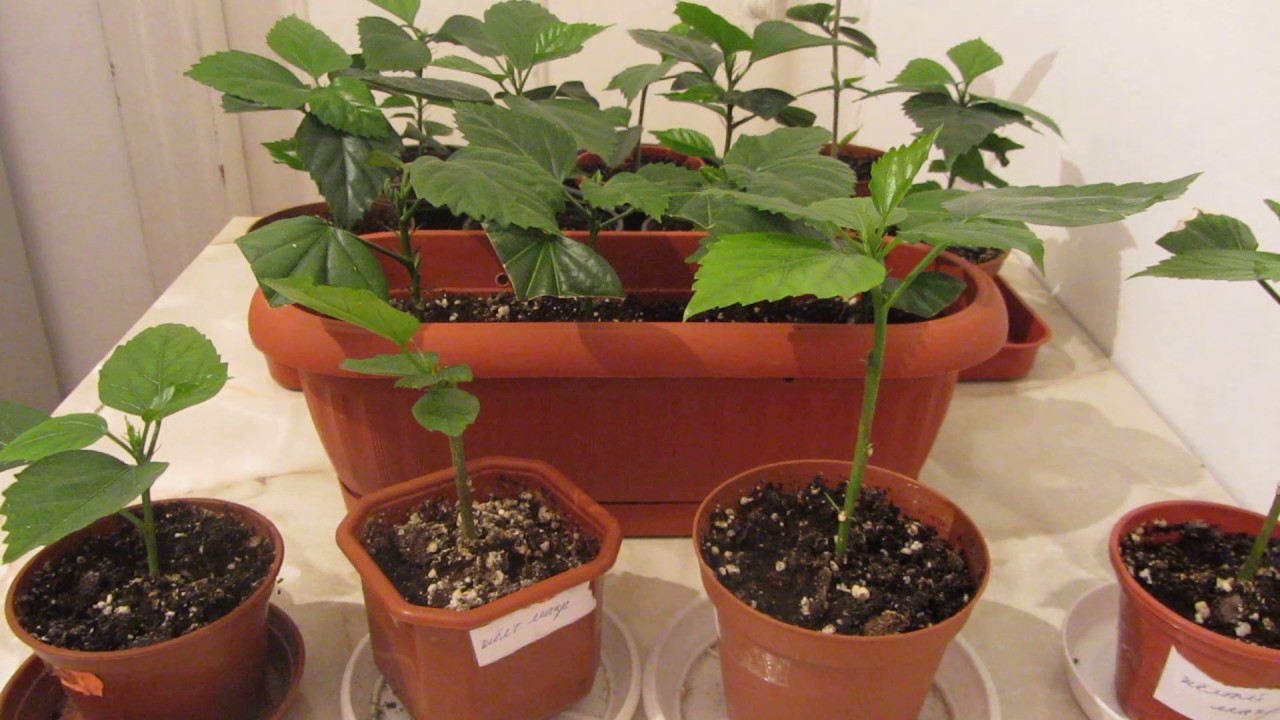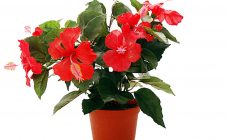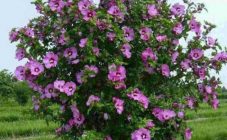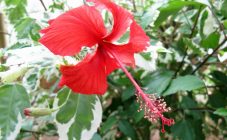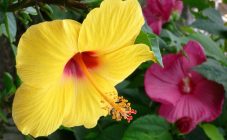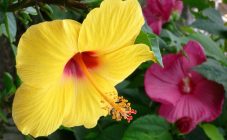Content:
Each grower strives to have exclusive plant varieties in his "collection". One of these crops is herbaceous garden hibiscus.
Characteristics of culture
Hibiscus (marsh) herbaceous garden — perennial, woody shrub plant of the Malvov family. Powerful shrub trunks can reach a height of more than three meters. It features lush foliage, large bright flowers ranging in size from 5 to 40 cm.
The genus Hibiscus has more than 300 species, mainly distributed in subtropical and tropical latitudes. Some types of this plant were used in the perfume industry, others were used for cooking.
This flowering plant originated in Asia, it was the national flower of Malaysia. Due to the huge range of colors and shades, it aroused the interest of American florists. In the 50s of the last century, the "Hibiscus Lovers Society" appeared, which gave impetus to further selection. As a result of experiments, many new species were created, including hibiscus (marsh) herbaceous or herbaceous.
Hibiscus (marsh) herbaceous bred by the method of selection of three species, deservedly received the second name - hybrid. Breeders crossed the holly hibiscus, pink hibiscus, red hibiscus, having received a beautiful unpretentious plant suitable for cultivation in the territory of Russia in the open field. The hibiscus Fireball “Fireball” is the most adapted to the conditions of the middle zone.
The plant is different:
- A strong, developed, dense root system located at a depth of 15 to 45 cm, which allows it to easily endure drought and frost. It is impossible to dig deep into the soil around this culture in order to exclude damage to the roots.
- Wide, large foliage of light green or dark green color. The shape of the leaves is: elongated, oval, round and depends on the variety.
- Large flowers up to 40 cm in diameter. The colors can be different in the spectrum from white to dark cherry color. The number of petals in some varieties exceeds 10 (representatives of a smooth or corrugated type).
- A branched stem system. Each bush has several thick green trunks with a red tint up to three meters high. Shoots and stems have strong foliage.
Hibiscus herbaceous garden: growing and care
The specifics of growing this shrub is quite simple, but neglect of the basic recommendations can lead to the death of an exotic specimen, therefore, compliance with the basic agrotechnical standards recommended for this plant is very important.
Soil preparation
The soil for growing herbaceous hibiscus can be any, but for comfortable plant growth, it is better to add peat and humus mixed with a small amount of sand to the main soil.If possible, you can add a little rotted pine or spruce needles to the soil - this will help reduce the acidity of the soil. You also need to take care of drainage. At the bottom of the planting pit, you need to put branches, creating a small pillow of them. On this, the preparation of the landing site can be considered complete.
Planting and caring for herbaceous garden hibiscus
Planting of seedlings begins in a well-established warm weather around the end of May or the beginning of June in a prepared soil. The planting hole is poured abundantly with water and the seedling is carefully moved from the container to the seat, deepening the roots below the freezing of the soil, but not deeper than 45 cm. Sprinkle the roots with loose earth and lightly crush, then watered again abundantly.
The seedlings must be carefully looked after. They require frequent and abundant watering, but it is impossible to allow stagnation of water around the stems, loosening the ground until the liquid is completely absorbed. The regime of frequent watering is observed until the end of the flowering period, and after its end, the intensity is gradually reduced.
Herbal garden hibiscus: care and reproduction
In the process of active growth, it is necessary to carry out some agrotechnical measures:
- A month after planting, it is necessary to feed the shrubs with nitrogen fertilizers. Nitrogen fertilization is repeated monthly until autumn.
- After watering, do not forget to loosen the topsoil, slightly spudding the stems.
- In the process of growth, plants may need a support, which is easy to make from scrap materials.
- If necessary, pinch the tops of the stems to form a dense crown. This will awaken the dormant processes.
- Remove dried flowers, yellowed leaves, wilted stems in a timely manner.
- At the end of the growing season, in autumn, after the foliage has fallen and the stems have dried, the aboveground organs of the plant are removed under the root. Potash fertilizers are applied to the soil. The location of the roots is insulated with dry grass, sawdust or fallen leaves - this will help preserve the root system, protecting it from freezing.
There are three ways hibiscus propagates:
- seminal;
- by grafting;
- the method of splitting the root system.
Seminal way
In March, the seeds are soaked in a solution of succinic acid (purchased at the pharmacy) until germination of the shoots, followed by transplanting the germinated seeds into pots with peat soil. The pots are covered with plastic wrap and removed once a day for airing. After sprouting, they are grown as ordinary seedlings until the end of May. In early June, when the threat of frost is minimal, they are planted in open ground.
Reproduction by grafting
Cuttings for propagation are cut in late summer or early autumn from the tops of the bushes. The trim points are sprinkled with wood ash. Cuttings should have three or more internodes. The cut stems are placed in water until roots appear. After their appearance, the sprouts are planted in pots with a mixture of peat and sand. Then they are kept at home as ornamental plants until spring. In early summer, they are planted in open ground.
Reproduction by dividing the root system
The hibiscus root system grows rapidly. This allows the root system to be dug up in early spring and carefully divided in two. Sprinkle the place of separation with wood ash. One of the divided parts can be planted in another place, thereby multiplying the bush. Plants will begin to bloom actively only after a year.
Growing difficulties
Plants are susceptible to chlorosis. With this disease, the leaves of the culture turn pale, curl and become covered with yellow spots. Subsequently, they die off and fall off. It is caused by a lack of iron and is treated by spraying with agrochemicals based on chelated iron.You can also bury old rusty pipes or pieces of iron next to the plants. At the first signs of the disease, treatment is necessary.
Use in landscape design
Due to its abundant colorful flowering and unpretentiousness, hibiscus (marsh) herbaceous is widely used for various design solutions when decorating gardens and parks. To give your garden a bright, colorful look, these plants will be an excellent purchase.
This culture is universal. It goes well with other flowerbeds. The plant looks especially good next to roses, evergreen conifers; it is often planted next to lavender. The marsh grassy species is suitable for decorating artificial reservoirs.
Using the information provided in the article, it is possible to successfully grow hibiscus. Incredibly large exotic flowers will decorate a garden or flower garden with their original look for many years.


